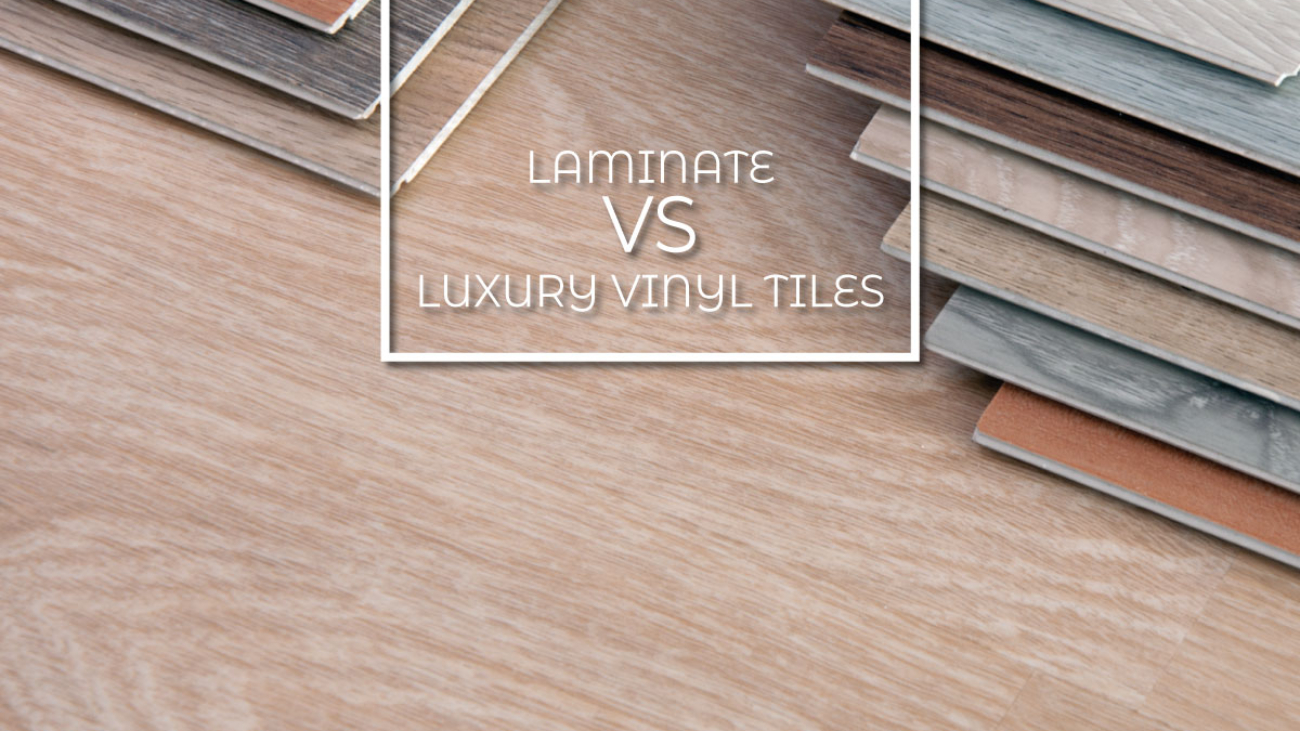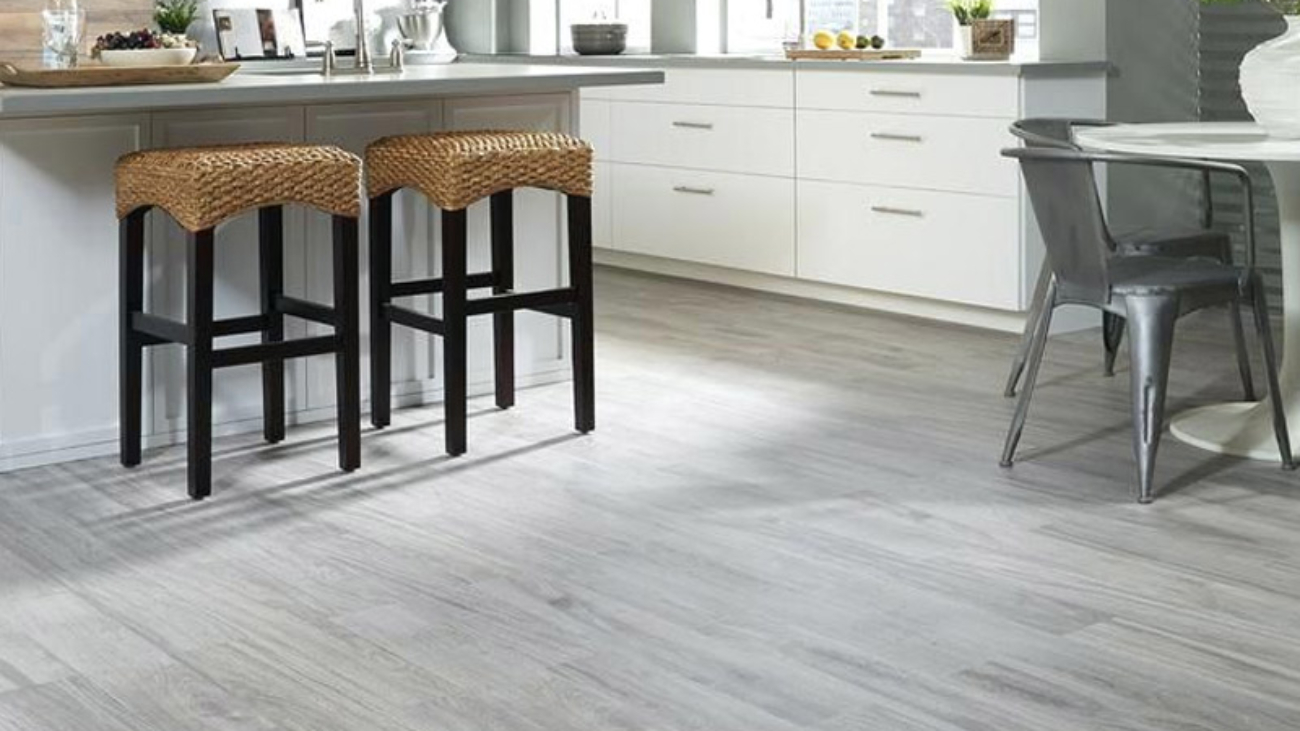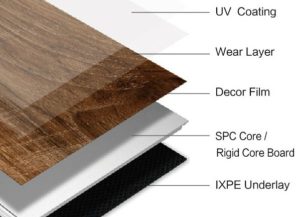A recurring question asked today is the specifics of the differences between laminate flooring and Luxury Vinyl Tiles. These two floors are mostly similar and worlds apart at the same time. Here we will attempt to clarify both floors in depth so that we may arrive at a clearer understanding of both floors.
Welcome to the world of laminate flooring and Luxury Vinyl Tiles.
Laminate Flooring
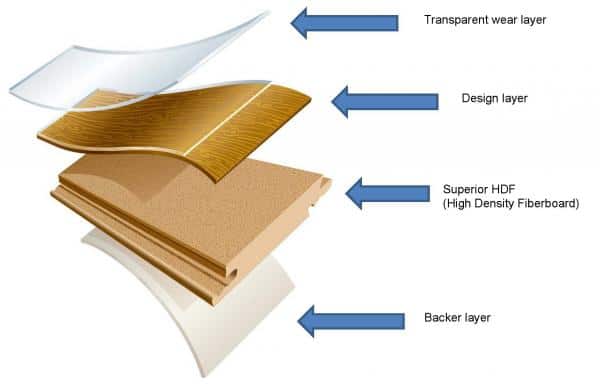
Laminate flooring is made up of several layers brought together. This gives us a finish that imitates the look of a real wood floor.
The top layer is a very hard wearing melamine. Little care is required in maintaining a healthy looking floor for a long time thanks to this layer.
Similarly, the following layer is a high quality photographic image decorative layer that looks just like a plank of real wood.
The core is a high density fiber board that resists point loading and gives your floor, excellent drop impact protection. Moreover, this layer also has the patented click system that fall into place during installation. This means that you floor can be installed without the use of any harmful adhesives.
Additionally, the last layer is a balancing paper that ensures your board gets the dimensional stability required for durability.
To read about laminate floors in dept, please visit our blog dedicated to laminate floors here.
Luxury Vinyl Tiles
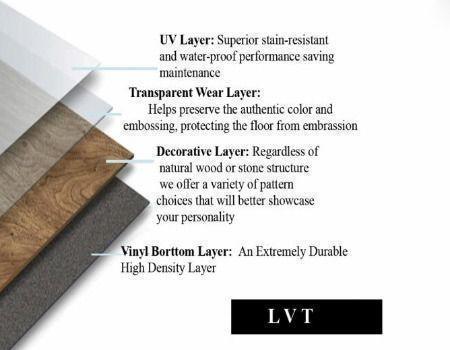
Luxury vinyl tiles are also made up of several layers brought together. This also gives us a finish that imitates the look of a real wood floor. The specific make up of the LVT floor also makes it 100% waterproof.
The top layer is a very hard wearing layer of 100% clear vinyl. Little care is required in maintaining a healthy looking floor for a long time thanks to this layer.
Similarly, the following layer is a high quality photographic image decorative layer that looks just like a plank of real wood.
The core – here is where the real difference is. The core is made up of 100% virgin vinyl. this layer is embedded with a fiberglass mesh. The mesh ensures that you have a very stable flooring with minimum expansion and contraction taking place in fluctuating humidity. Moreover, this layer also has the patented click system that fall into place during installation. This means that you floor can be installed without the use of any harmful adhesives.
Coupled together, these layers make up the luxury vinyl tile flooring board and this composition makes the material itself 100% waterproof.
Similarities
Firstly, both laminate and LVT flooring were manufactured to imitate wood floors
Secondly, both floors are supplied and laid in individual planks so as to look most like a wooden floor.
Thirdly, both floors boast low profiles so as to easily cover your existing floor.
And lastly, both floors are cheaper than solid or engineered wood flooring
Differences
Laminate Flooring
Melamine top finish is hard wearing
HDF core is not waterproof
Sound transference is high
Not recommended for wet areas. Keep away from water
No wet mopping
Luxury Vinyl tiles
UV hardened vinyl wear layer is ultra hard wearing
LVT is 100% waterproof
Quite under foot
Can be installed in kitchens and bathrooms
Wet mopping not a problem
Both floors are similar up to the fact that it is hard to tell the difference when they are laid down. Although laminate flooring is here to stay and will have a special preference by wood floor enthusiasts. LVT is the flooring that clearly wins over in the differences.
It is safe to say the LVT will be flooring of choice through the year and we will probably see more innovations coming from the laminate ranges going ahead.

 Cart is empty
Cart is empty 